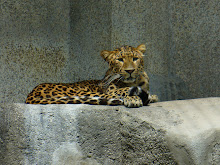
In my previous incarnation, as a research biologist, I must have spent many weeks trawling through the dry and chilly storerooms of various famous museums, which is a story in itself. This last month, I have been revisiting my last big scientific project- a study of bee and wasp colouration- as I have sifted through the masses of images on my hard drive. Periodic hard-drive purges and desktop re-arrangement are undoubtedly as much a part of the modern scientist’s annual routine as mending butterfly nets and topping up specimen jars was for our antecedents. In my case, I have many gigabytes of images gleaned from Oxford University’s Museum of Natural History and two Belgian museums.
Museum trips were one of my great pleasures as a scientist and, in this case, I spent many happy days going through countless tight-fitting wooden drawers, deciphering Victorian handwritten labels and photographing anything that caught my eye. There were startling metallic Mexican orchid bees (complete with the impossibly long, drinking-straw-like probosces they need to access nectar) and sinister shiny blue thread-waisted “digger wasps”, with their fearsome-looking stings and a thousand other species in every colour of the rainbow.
People tend not to group ants with wasps and bees, but they are related- they are all members of the hymenoptera: a sophisticated insect family with numerous equally vibrant, but more obscure members.

In the case of my own work, I generally talk about colour in its literal sense, but amongst the hymenoptera- the bees, wasps, ants and their relatives- there are so many creatures with private lives that are certainly “colourful” in the word’s more figurative sense. For example, I am told that the thread-thin waists of the digger wasps allow them enough flexibility to sting forwards, as well as behind them. A similar trick is used by certain ants, who bite would-be-attackers and then angle their rear-end forwards, and spray formic acid from the end of their abdomens into the wound; a very biological version of adding-insult-to-injury. Then there is the “gay” behaviour seen in certain Australian parasitic wasps and there is the ability of worker bees to detect how many sexual partners their mother- the Queen- has had. However, all this pales in comparison with the lives of the digger wasps mentioned above, which sting other insects with a paralysing venom, drag their helpless victims’ bodies into subterranean hollows and then lay their eggs in the still living insects’ flesh, leaving them to be eaten alive from the inside out, once the eggs hatch into larvae.
When Tennyson famously wrote that nature is “red in tooth and claw”, it seems that he was making an understatement. "
-Extract from the forthcoming book, "Weirdbeautiful" (c) Victoria Neblik, 2009. Text and images all (c) V Neblik. All rights reserved.

To join the mailing list for advance notification of "Weirdbeautiful"'s publication, e mail neblik@yahoo.co.uk with "Weirdbeautiful book mailing list" in the title. You will not be sent any spam or other mailings and your e mail address will not be passed on or sold to any third parties. I also have a technical book on aspects of bee, wasp, ant, ichnuemon fly and sawfly colouration due out soon: "Beautiful Bees, Wasps, Ants and Sawflies: Structural colouration in the Hymenoptera"-this was co-authored with Prof. Jean-Pol Vigneron- for details, please e mail the same address. Thanks.








